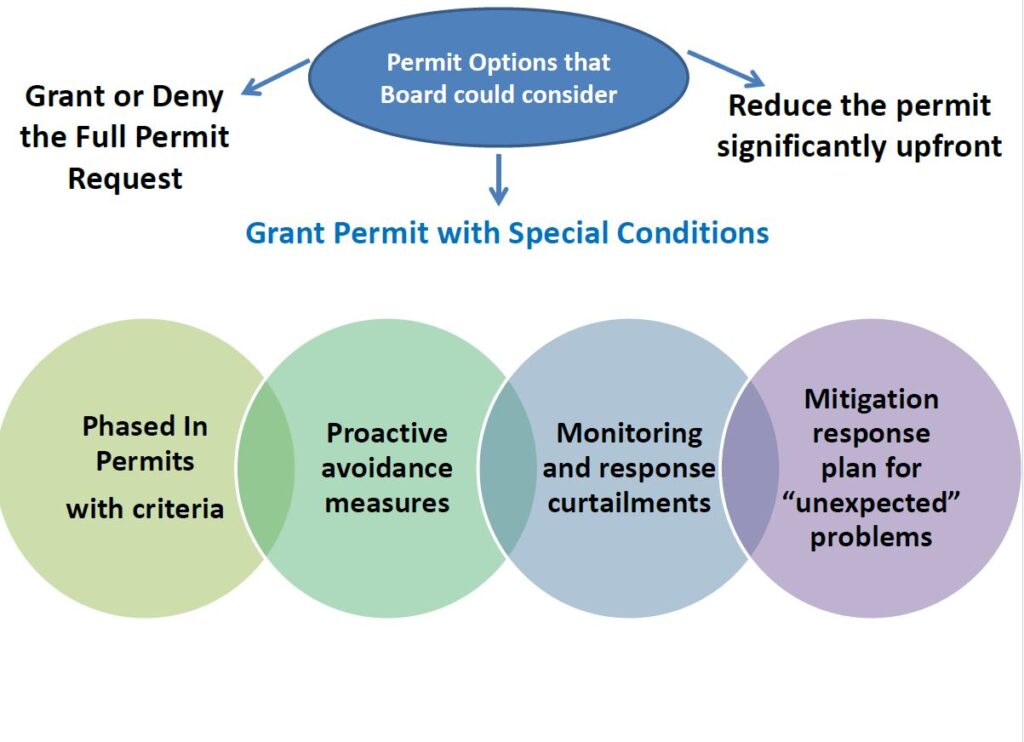Evolution of Sound Policy.
Since 1904, the legal framework applied to groundwater resources in Texas has been the common law “Rule of Capture.” Texas is the only western state that still governs groundwater based on this legal doctrine that provides a landowner the right to capture and develop water beneath their property. the courts have consistently ruled that groundwater in place is a vested private property right . Although the Rule of Capture remains in effect today , there are exceptions to the Rule of Capture and one of those exceptions is that the Texas Legislature has established groundwater conservation districts (GCDs) as the preferred method of groundwater management. GCDs such as the District have been established across the state and are authorized to modify how the Rule of Capture is to be applied within their boundaries, as part of a comprehensive, approved groundwater management plan. GCDs will manage groundwater resources in order to protect property rights, balance the conservation and development of groundwater to meet the needs of this state, and use the best available science through rules developed, adopted, and promulgated in accordance with the Water Code.
Since its creation in 1987, the District has applied the statutory authority and sound science to manage its groundwater resources. The District established a precedent for developing the governing polices and rules through an initial data-driven evaluation of the science to characterize the District’s aquifers followed by a thorough vetting by affected stakeholders and the public. This process has served to inform the Board’s direction and policy decisions resulting in the current regulatory program that has evolved to address challenges unique to the District.
The evolution of the District’s policies and strategies has produced a regulatory program that is fair, innovative, and customized to objectively address the challenges and management objectives unique to the District. The District’s management approach is centered around sustainable yield studies that inform our understanding of potential impacts to groundwater availability and spring flow from groundwater production. On the basis of numerous scientific studies, monitoring data and stakeholder input the District has implemented rules and policies relating to:
- cap firm-yield production from the freshwater Edwards Aquifer;
- allow future production from the freshwater Edwards Aquifer only on an interruptible basis through Conditional Production Permits;
- create an Ecological Flow Reserve under the District-held Conservation Permit to support minimum spring flow rates during Extreme Drought;
- create and promulgate rules for Management Zones;
- invest in exploring the feasibility of alternative water supply strategies (e.g. aquifer storage and recovery, brackish groundwater desalination);
- adopt ambitious DFCs to preserve minimum spring flows through the joint-regional groundwater planning process; and
- implement an aggressive drought management program to preserve minimum spring flow rates and groundwater supplies.
After the passage of HB 3405 in 2015, the District’s attention then broadened to include the management o

f the Trinity Aquifer and other non-Edwards aquifers in the Shared Territory, the development of a permitting program with a refined interest in managing to avoid unreasonable impacts. The integration of these strategies collectively produced a program formed on the basis of demand-bas
ed permitting coupled with an evaluation of the potential for localized and regional unreasonable impacts. At the core of our district’s legislative charges, and our own established rules and policy, is our goal of managing total groundwater production in a manner that will avoid unreasonable impacts and that achieve a specific desired future condition (DFC) for the aquifer. The way we do that is by consistently evaluating all groundwater production requests using a three part test where we assess the non-speculative demand, and local/regional evaluations. This permitting approach is bolstered by an active drought management program to abate groundwater depletion during District-declared drought.
 The District relies on a “management toolbox” and employs a wide variety of regulatory tools and scientific strategies because a one size fits all approach is not always the best management solution. The regulatory program and policies m
The District relies on a “management toolbox” and employs a wide variety of regulatory tools and scientific strategies because a one size fits all approach is not always the best management solution. The regulatory program and policies m
ust be adaptable and able to evolve as the science of the aquifers evolve and, inevitably, as the laws governing GCDs change. All strategies are integrated and integral to achieving the DFCs in compliance with state law.
At the core of our district’s legislative charges, and our own established rules and policy, is our goal of managing total groundwater production in a manner that will avoid unreasonable impacts and that achieve a specific desired future condition (DFC) for the aquifer. District’s preferred approach when considering localized impacts in permitting decisions, is to avoid such impacts and reserve mitigation only after all reasonable preemptive measures have been exhausted. This objective is achieved through an evaluation of the potential for unreasonable impacts using the best available science to anticipate such impacts, monitoring and data collection to measure the actual impacts on the aquifer(s) over time to groundwater production, and prescribed response measures that are triggered by defined aquifer conditions and implemented to avoid unreasonable impacts. 
If unreasonable impacts are anticipated, the District has the ability and authority to set special permit provisions that serve to protect private property rights of all groundwater users by conserving, protecting, and managing the groundwater resources within the District. Special provisions are a critical management tool that incorporate elements of adaptive management which allows the District to more effectively respond to new data and information using best available science. Such elements include production permit phases, compliance monitoring plans, avoidance and mitigation measures, index wells and water level triggers, and drought curtailments. These management strategies and safeguards serve to protect all well owners and the aquifer resources for the long-term.

